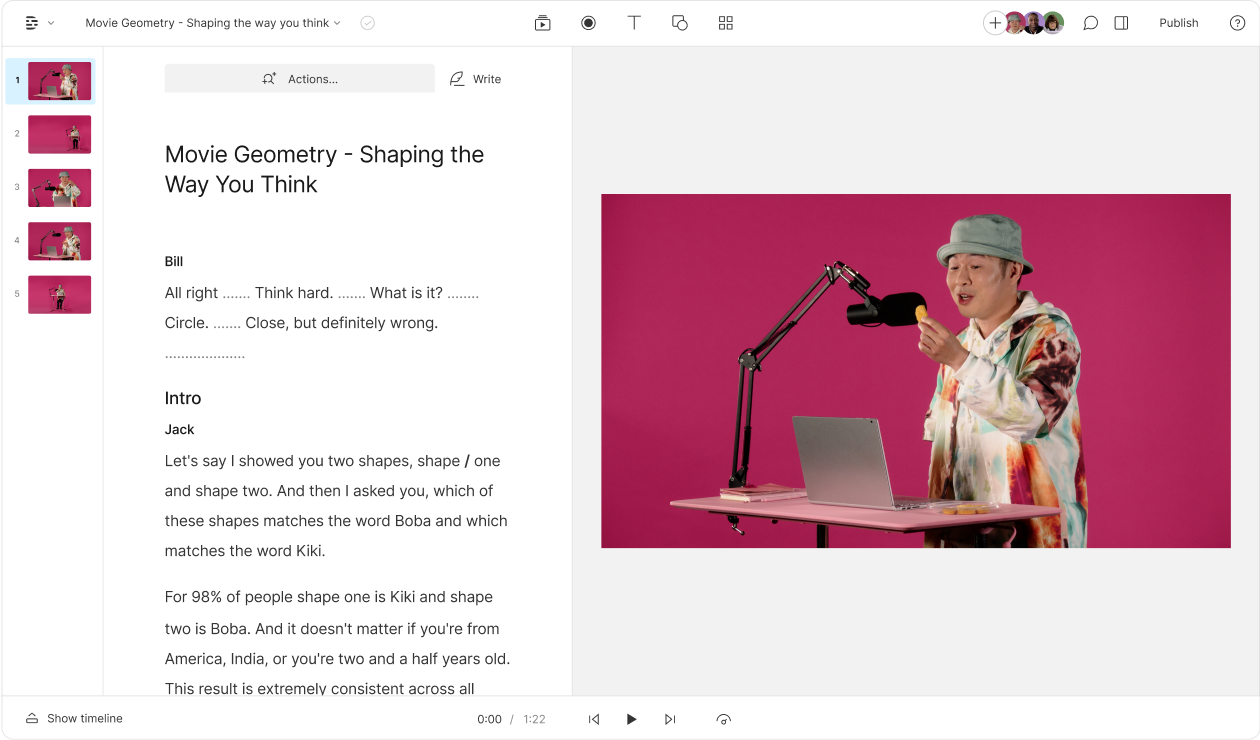What type of content do you primarily create?




So many video editors on platforms like YouTube and TikTok are self-taught. Many become experts after years of practice and making mistakes along the way.
That's a great way to learn, but it's not the most efficient way. Whereas a traditional editing job might expose you to professional mentors who can distill years of experience into succinct advice, creators are often left wondering: "What are the mistakes I'm making that I don't even know I'm making?"
To help answer that question, I reached out to a handful of experienced editors (and one producer) to ask: What mistakes do novice editors make—and how can they fix them?
Mistake #1: Over-editing
As editors fight for viewers' attention, many employ fast, sometimes frantic, editing. But of course, there's a limit. Jeremy Shuback, an editor and motion designer who has worked with the likes of Johnny Harris and the Wall Street Journal, warns editors against employing "too many wild and crazy graphics coming up to 'keep things interesting.'" Instead, Shuback encourages creators to focus on "a rock solid script and narrator."
"Novice editors often focus too much on graphics or pacing and forget about emotion," said Dan Hinz, an editor who has worked with creators like Tronicsfix and Andrew Flusche.
"To fix this, decide what emotion you want the audience to feel while they're watching, and that can lead to higher-quality edits," he continued. "Fast cuts and lots of graphics won't fix a bad story."
Editor Hayden Hillier-Smith on his YouTube channel refers to this dilemma as his "Jurassic Park Theory." Like Jeff Goldblum's character in the film, Hillier-Smith warns editors not to think only if they can do something, but rather if they should.
Mistake #2: Shoddy sound
"Nothing gets me to skip a video faster than ridiculously loud or music that's clipping," Hinz said. "Bad audio physically hurts, and I'll swipe away from that in a heartbeat."
Not every audio problem can be fixed by an editor, of course. But editors can do their best to clean up audio clipping and minimize background noise, for instance. Other common issues include inconsistent volume levels between clips, something Descript's AI can automatically fix with Regenerate.
It's worth repeating the popular advice here: people are far more forgiving of substandard video than they are of substandard audio.
Mistake #3: Distracting music
"Music is helpful but can also be distracting if not placed properly," says Jeanette Moreland, a producer who has created for Atlas Obscura and The Verge. "Use music for effect and pacing, but make sure we can still hear what folks are saying."
Advice varies, but many editors report putting music between 10-15 decibels lower than any voiceover it's playing under. Additionally, the character of a music track can affect how much it competes with the spoken word. Music with lyrics may be much more distracting than instrumental music, for instance. Rhythmic tracks (like lo-fi beats) tend to be less distracting.
The best editors use music surgically, to enhance an emotion, create drama, or add an extra layer of depth to a story. It's more work than inserting a track on loop, but is often worth the effort.
Mistake #4: Visual mismatch
Especially on platforms like YouTube and TikTok, editors may feel compelled to cram in lots of cuts to keep the viewer engaged. Those cuts often need b-roll. Good editors also use b-roll to hide cuts (for instance, of an interviewee). But Moreland encourages editors to be wary of "stock b-roll just used for 'coverage' that doesn't have a functional purpose in the video."
Good b-roll usage can help tell your story when it is specific. A video about traffic congestion and public transit, for instance, has plenty of reasons to show stock footage of New York City's gridlocked traffic, aerial views of cities, and pedestrians on walkways. But these same images, in a different context, can give a video the feel of a late-night infomercial.
"Have strong, clear imagery that is interesting and shows people something new, and reflects what the audio is talking about," Moreland said. "Use graphics to explain complicated concepts, and keep it simple." It's the difference between, for instance, finding a generic animation of a chart to explain scientific findings and using the actual chart (or animating your own with the real data).
Mistake #5: Bad intros
Editors may not be scriptwriters, but they can help build an introduction that will leave the viewer wanting to watch more.
"I have to prove watching 20+ minutes is worth the viewer's time," Shuback said. "If they stay through the first 5 seconds, they'll typically stay through the first minute. And if they stay through that, they're likely to keep watching. I like to think of each 30-second segment as needing to be able to stand on its own."
"In the first 10 seconds I need to know what the video is about and what we're going to cover," Moreland said.
There are plenty of tools an editor can use to make a good intro. Try to find a visual hook in the first few seconds, something that will capture the viewer's attention. Cut out the fluff to make sure your intro establishes, plainly, what the video is about and why the viewer should care.
"A lot of this comes down to script and delivery," Moreland said, "but pacing of the edit and having interesting visuals to keep people engaged is crucial."



























%201.svg)






